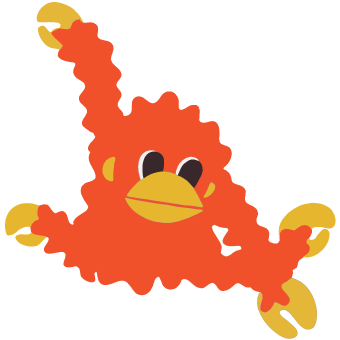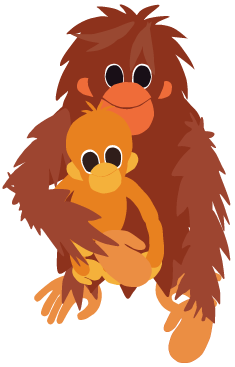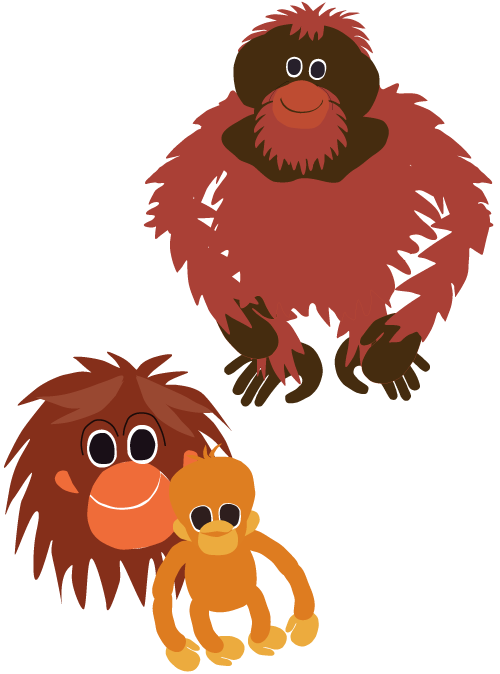*
ORANGUTAN
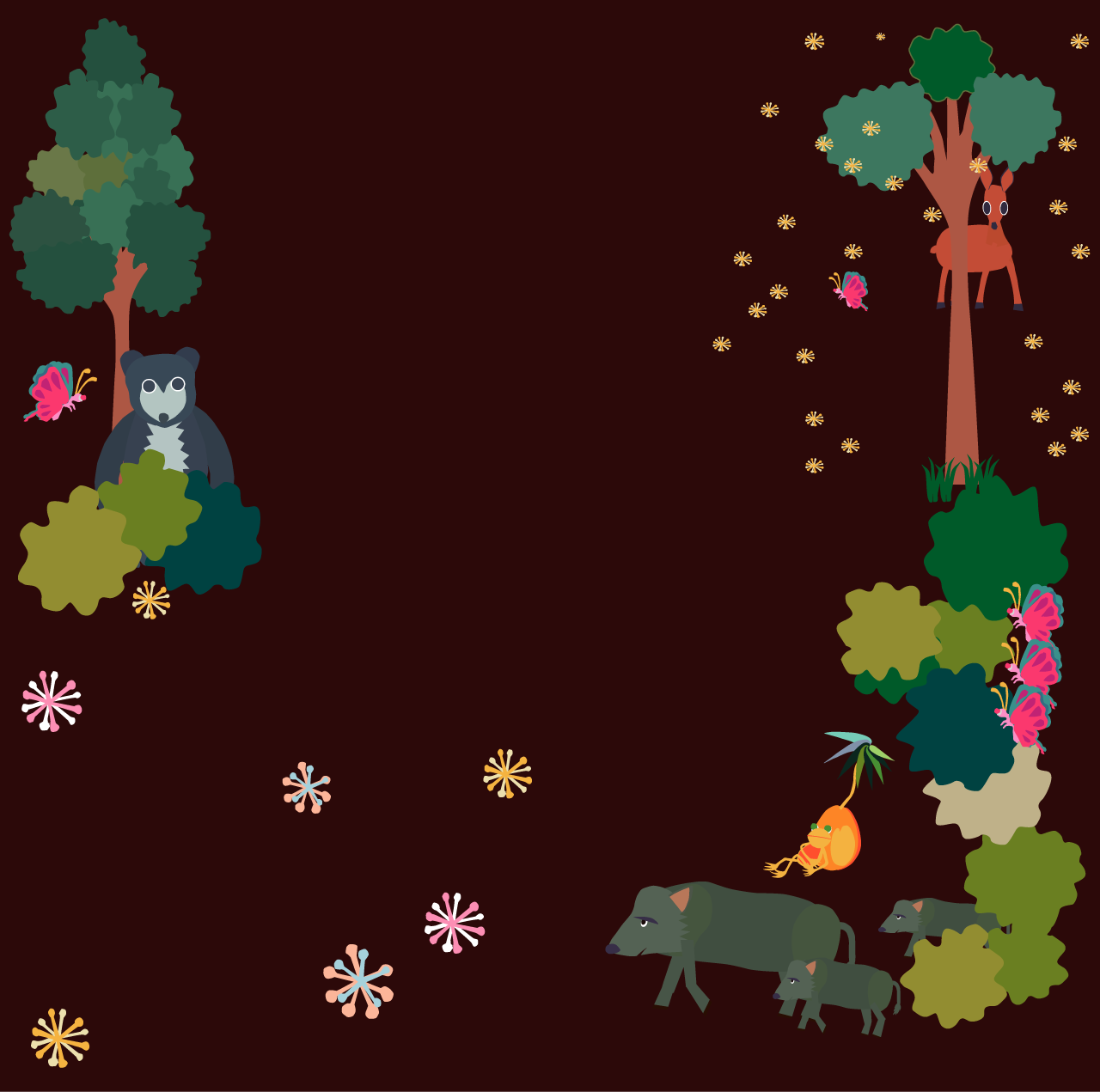
Orangutan=
“Forest people”
Oran(person)gutan(forest) = “Forest people”
“Orangutan” means “forest people” in the Indonesian language; they now live only on Borneo island and Sumatran island although it is said that their pre-ice age habitat sprawled from India to the entire South-East Asia. They are known as the largest arboreal mammal, that does not form a pack/group. Their intelligence compares to a five-year-old human. We know how 5-year-olds can recognize and absorb a lot of information; so can orangutans using their incredibly complex observations.
Height: 110-180 cm (head to waist)
Weight: female: 30-50 kg, male: 50-90 kg
Life span: 50 – 60 years
Covered with reddish brown hair and have long arms (1.5 to twice longer than their legs)
Orangutans do not have ligaments on their hip joints to hold thigh bones and pelvis together, which makes their anatomy well suited for moving from branch to branch.
About 60% of the orangutans diet consists of fruits; they also eat leaves, bark, flowers, and insects. Female orangutans give birth to their first child at approximately age 12, (pregnancy lasts around 270 days) and raise their child alone. The next pregnancy happens/occurs after 7 – 8 years on average, the longest interval among primates, so the child learns all the survival skills in the forest from its mother – what and when certain foods are available, what are the dangers, and so on. For more information, please visit: Japan Orangutan Research Center (JORC)
Critically Endangered (CR) DESIGNATION
In 2017, orangutans became designated as a Critically Endangered (CR) species, one rank up from Endangered species. They are classified into three sub-species:
Sumatran orangutan on Sumatra island: around 7,300
Tapanuli orangutan: around 750 – 800 (new species was found in 2017)
Bornean orangutan on Borneo island: around 45,000 – 69.000
The orangutan population has shrunk by 80 % within the last 100 years due to excessive and illegal logging, burning of the forests to make room for pulp and palm oil plantations, uncontrolled forest fires as a result, as well as illegal hunting for animal trafficking.
Japan’s post-war economic development was supported by Indonesia’s lumber industry. Even today, 80% of our photocopy paper and a large amount of the palm oil used in our daily snacks and cosmetics are imported from Indonesia. The destruction of their forests and our lifestyle in Japan are closely related as we benefit from their natural resources.
The rapid spreads of palm oil plantation which began in the mid 1990’s sees no end; now 86% of the world’s consumption is said to come from Indonesia. An average Japanese person is said to consume 4 kg of palm oil a year. The Japanese government has also announced that Japan will import ten-million tons of palm oil and husks to use as fuel for biomass power generation. In 2015, massive forest fires raged throughout Indonesia and burned down forests as big as the entire Shikoku Island. For more information please visit: Plantation Watch and biomass power generation
About Great Apes
Great apes include orangutans, gorillas, chimpanzees and bonobos. Humans share over 98 % of their DNA – they are our “evolutionary neighbours”. Gorillas, chimpanzees and bonobos live in Africa, and orangutans and live in Southeast Asia. Orangutans diverged from our common ancestor 13,000,000 years ago, gorillas 4,500,000 years ago, and chimpanzees and bonobos 2,000,000 years ago. These four species all have different family formations: Solitary orangutans form single mother families, gorillas patrilineal families, chimpanzees all mixed families, and bonobos even form same-sex families. Great apes are our relatives, having emotions just like us – they laugh when happy and die when over-stressed.
